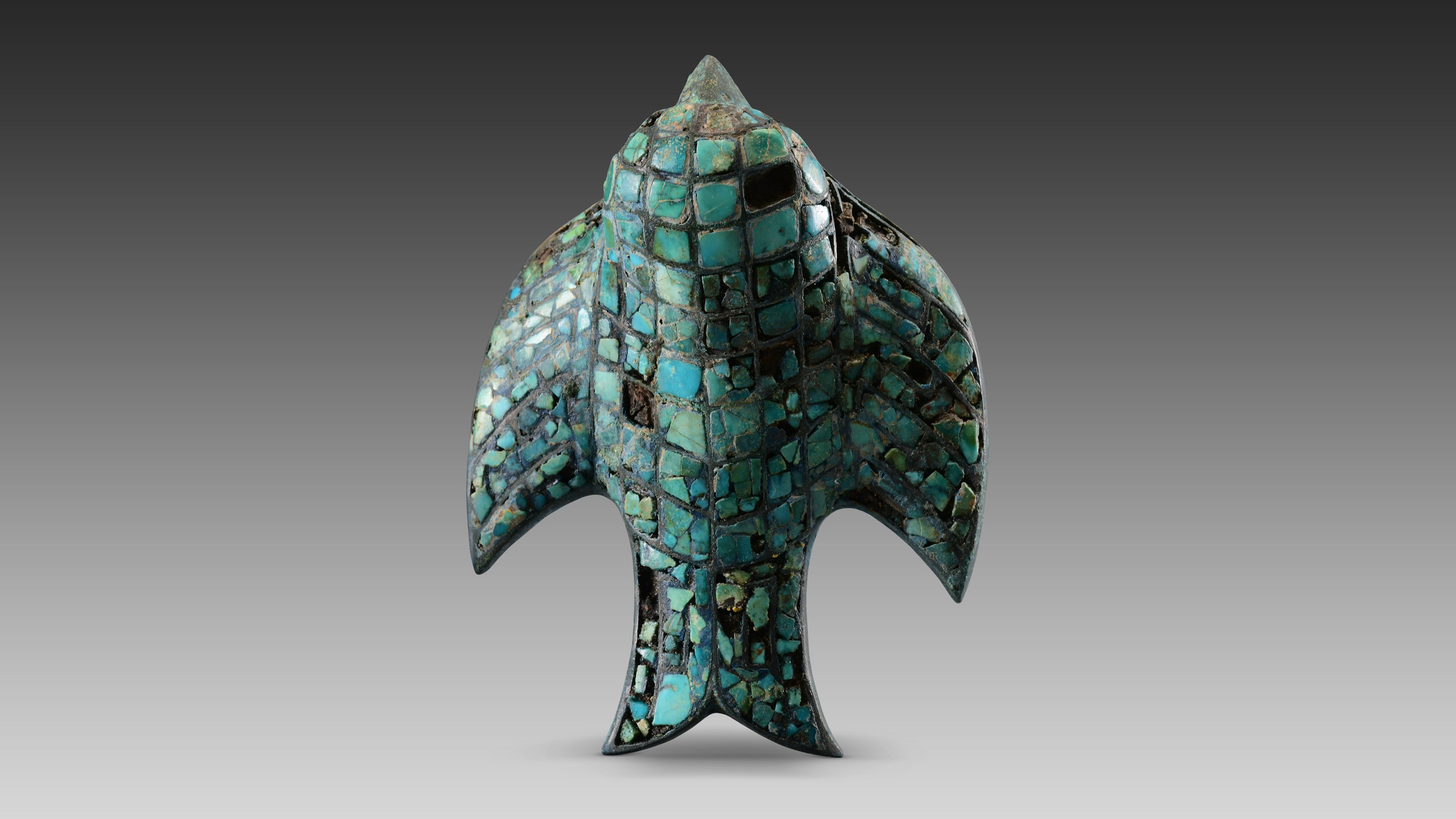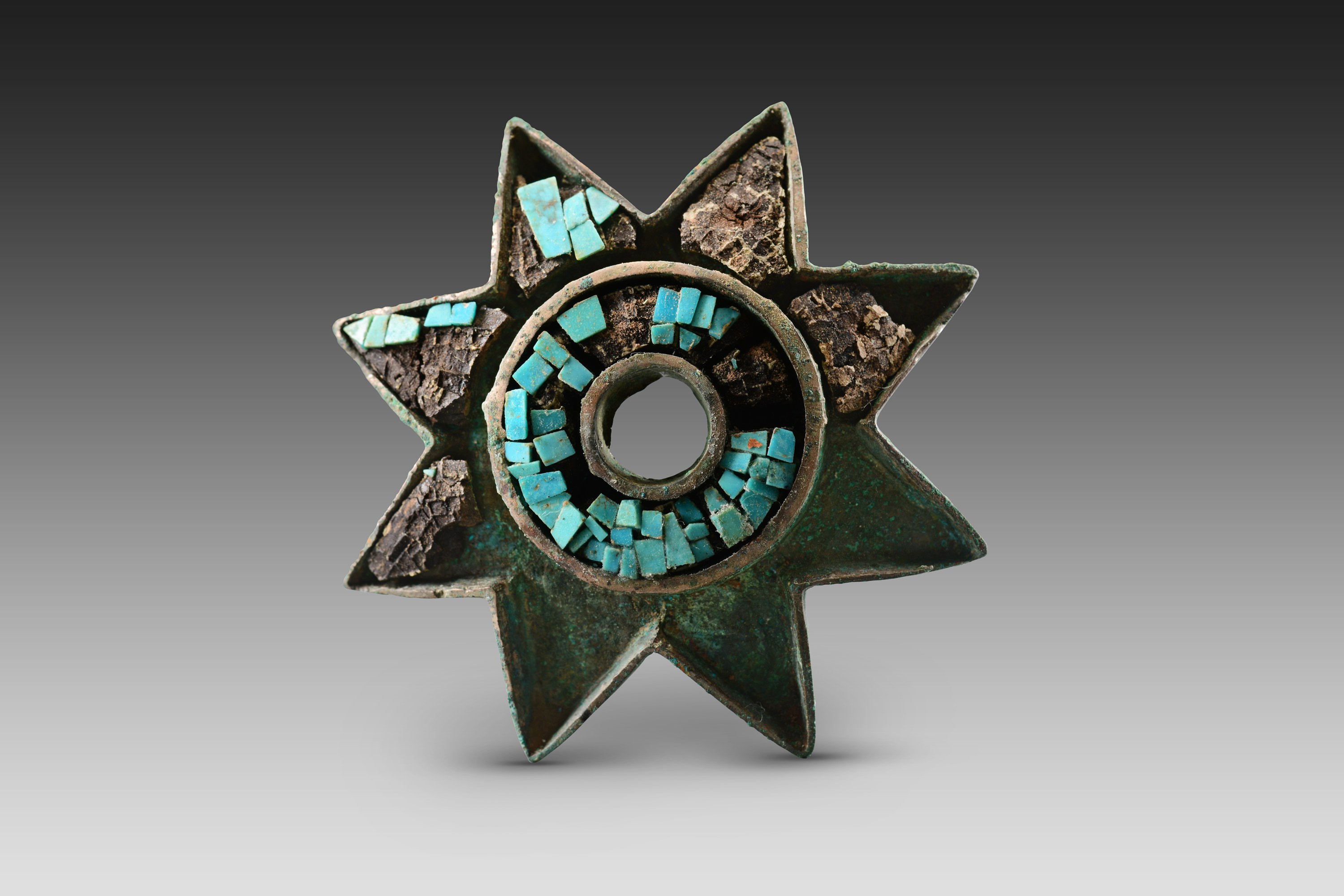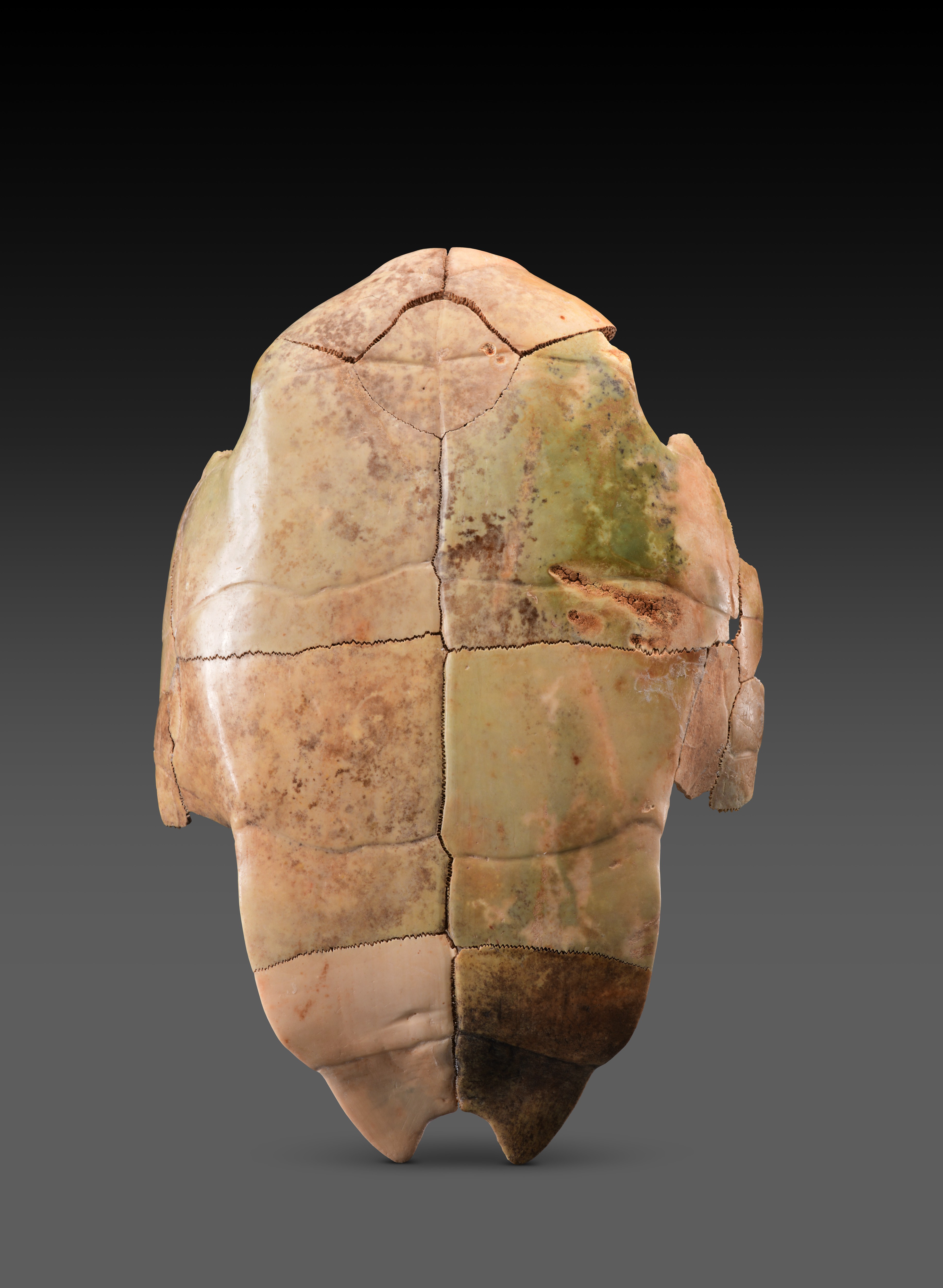
An exquisite turquoise copper bird ornament unearthed from the Zhaigou site in Shaanxi, China. /CNSPhoto
An exquisite turquoise copper bird ornament unearthed from the Zhaigou site in Shaanxi, China. /CNSPhoto
The latest archaeological discoveries of the Shang Dynasty (1600-1100 B.C.), particularly the achievements at the most abundant site – Zhaigou site located in Shaanxi Province on the Jinshaan Plateau – was revealed at a progress meeting held by the National Cultural Heritage Administration in Beijing on May 30.
The site is the largest in scale and richest in artifacts among all the known Shang Dynasty sites, and is the only one of its kind in northern China.
The Zhaigou site in Zhaigou Village, Yulin City, northwest China's Shaanxi Province is situated in the heartland of the northern Shaanxi Loess Plateau. The site has revealed a large area of rammed-earth structures, large-scale tombs, small burial grounds, pottery kilns, and other diverse remains, scattered across 11 neighboring hills.

An exquisite copper ornament with turquoise inlay, unearthed from the Zhaigou site in Shaanxi, China. /CNSPhoto
An exquisite copper ornament with turquoise inlay, unearthed from the Zhaigou site in Shaanxi, China. /CNSPhoto
Nine groups of high-ranking noble tombs have been discovered, including three groups of large tombs with the shape of the Chinese character "Jia." This discovery establishes it as the largest, most abundant, and highest-ranking late Shang Dynasty cemetery on the Jinshaan Plateau.
For the first time on the Jinshaan Plateau, chariot and horse remains from the late Shang Dynasty have been found, providing crucial evidence for exploring the emergence of chariots in China and the development of chariot burial customs.
Numerous bronze chariots and horses, jade artifacts, bone tools, lacquerware, and oracle bones found at the site reflect the economic and cultural progress of the loess hill region during the Shang Dynasty, as well as the impact of the Shang Dynasty on the area.

Oracle bones unearthed from the Zhaigou site in Shaanxi, China. /CNSPhoto
Oracle bones unearthed from the Zhaigou site in Shaanxi, China. /CNSPhoto
The discovery of the central settlement and large tombs at Zhaigou has provided a clear archaeological context for the bronze artifact assemblages continually unearthed in the loess hill region over the past few decades. It resolves the long-standing academic question that these relatively rich bronze artifact groups should be associated with high-ranking burials, offering a feasible reason for future research in the region.
The ongoing archaeological work has preliminarily revealed the highly-developed bronze civilization in northern Shaanxi during the late Shang Dynasty far beyond previous understanding.
Shaanxi's Shang Dynasty archaeology plays a significant role in exploring the political and geographical structure of the local Shang states and understanding the cultural exchange and interactions between the central plains and the border regions at the time.